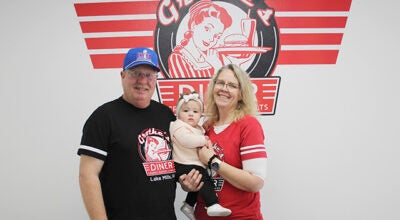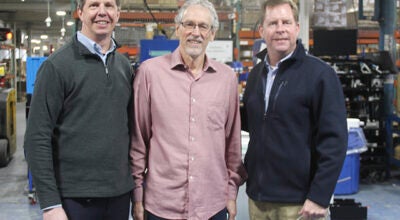Group wants money for road, transit projects
Published 9:40 am Friday, February 21, 2014
ST. PAUL — A large coalition of transportation, business and labor interests called Tuesday for a new 5 percent sales tax on fuel in Minnesota to help raise money for roads and transit projects.
The group, which calls itself Move MN, laid out a $750-million-a-year spending plan at a legislative hearing. It includes two major sources of revenue: $360 million annually for roads from the 5 percent sales tax on wholesale fuel, and another $335 million for transit projects from a three-quarter-cent sales tax increase in the seven counties that make up the Twin Cities metropolitan area.
Move MN also seeks $16 million from a flexible federal account for bike and pedestrian infrastructure, and wants to dedicate the state’s sales tax on leased vehicles directly to road and transit funds for an additional $32 million a year. The group formed around the belief that if Minnesota wants to remain economically competitive, it needs a boost in transportation spending so it can reduce bottlenecks and repair battered infrastructure.
“Nearly half of Minnesota’s roads and bridges are in poor or mediocre condition and almost 2.5 million commuters drive across a structurally deficient bridge each day,” wrote Move MN in promotional materials distributed to lawmakers at a joint meeting of the House and Senate transportation committees. Move MN has nearly 200 member organizations, including the AFL-CIO, Small Business Minnesota, the League of Minnesota Cities, and Catholic Charities of St. Paul and Minneapolis.
The Legislature last raised the state’s gas tax in 2008, and Move MN members say the money raised no longer keeps up with the need caused by population growth. The 5 percent wholesale tax would be levied in addition to the existing 46.5-cents-a-gallon gas tax. Move MN said taking fuel at the wholesale level would mean more revenue would be generated as the price of fuel increases.
But Sen. David Osmek, R-Mound, said gas purchasers would still feel the pinch even if the taxes are paid at wholesale.
“Ultimately the distributors are going to pass this along to the customers,” Osmek said. “No matter who it is — we’re adding this price at the pump.”
Move MN said the tax increase would cost most drivers less than $2 per week.
In the Twin Cities, the current quarter-cent sales tax would be increased by three quarters to one cent on a dollar purchase. In addition to funding urban and suburban bus lines in the Twin Cities, Move MN said it would raise enough money to fund future proposed light-rail transit routes and new rapid bus lines. The counties affected would be Anoka, Carver, Dakota, Hennepin, Ramsey, Scott and Washington.
Move MN worked closely on its package with Sen. Scott Dibble and Rep. Frank Hornstein, the Minneapolis Democrats who chair the Senate and House transportation committees. Dibble and Hornstein plan to introduce bills in the upcoming legislative session that mirror the Move MN proposals.
Groups representing the state’s major businesses, including the state Chamber of Commerce and the Minnesota Business Partnership, were notably absent from the Move MN roster. So far, those groups have been reluctant to back new taxes for transportation, and without their support it will be tougher for Move MN to build support among lawmakers. Democratic Gov. Mark Dayton supports more money for roads, but has said he believes it will be politically difficult to achieve that goal in an election year.
Dayton’s transportation commissioner, Charlie Zelle, didn’t throw his weight behind the Move MN proposal at Tuesday’s legislative hearing. But he said he and other transportation boosters need to do a better job of explaining the cost of not acting soon.
He shared a recent conversation that he had with a truck driver upset by the prospect of paying more fuel taxes.
“We have to be pretty clear about what the next 15 years would be like without any improvements,” Zelle said. “I told him, think about the wear and tear on your truck. Think about what it costs you to sit in traffic, and when it takes a longer time to get your load delivered. We have to do a better job of quantifying what the choices are.”




